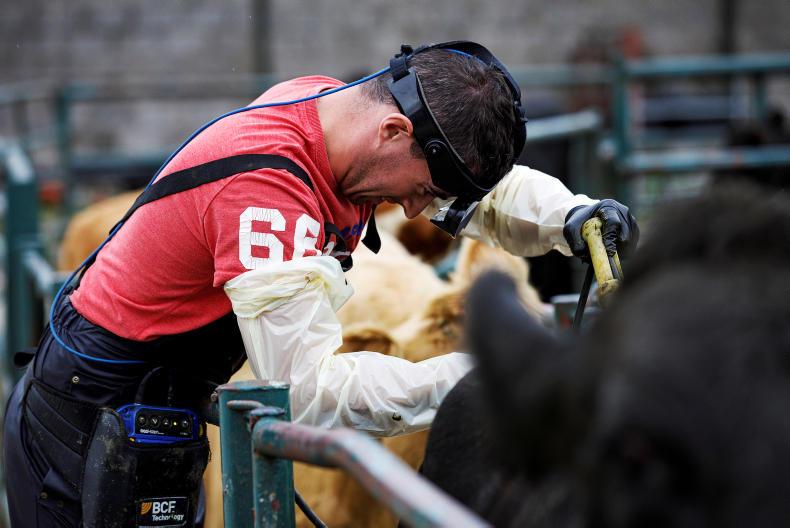In-spec bonus payments: Farmers slaughtering cattle should familiarise themselves with the new in-spec bonus payment structure. More categories and payment bands will take a little getting used to and we have gone into detail about the changes on page 8 this week. We also have some detailed examples of different grades of animals and how payments are calculated here. The main points changing are a new €0.20/kg in-spec payment on steers and heifers under 30 months grading from O= to U+ on conformation and from a 2+ to 4= on fat coming from a quality assured farm, with a final 60-day residency period and a maximum of four farm residencies. Steers and heifers under 30 months and grading O- or 4+ meeting all other in-spec criteria will attract an in-spec payment of €0.12/kg.
Steers and heifers aged between 30 and 36 months grading at least a O- on conformation score and between 2+ and 4+ on fat will attract a payment of €0.08/kg provided all other in-spec criteria are met. There are currently no weight limits attached to the recently agreed bonuses. It should be noted that the new in-spec bonuses do not apply to bulls slaughtered under 16 months on the QPS grid.
Housing: With housing not far away, now is a good time to take a look at ventilation issues in sheds. Most problems occur shortly after housing and it’s too late amending sheds when an outbreak of pneumonia has already occurred. It’s very important when cattle are housed that ventilation is correct and there is plenty of air movement allowing stale air to be removed.
Warm, moist and stale air is a breeding ground for disease. Signs that the ventilation is not up to scratch include a constant smell of ammonia, temperature too high, cobwebs on the timbers and sheets becoming black with mould.
There are a few points to note. A ridge opening should run along the full length of a roof apex. Wider sheds require wider openings, as follows: Up to 15m (50ft) span – minimum 450mm (18in) wide. Up to 24m (79ft) – 600mm (24in) wide. Over 24m – 750mm (30in) wide.
Size of inlets is equally important to allow fresh air to enter the shed, create a stack effect and push the stale air out.
Be careful where sheds have been extended that there is sufficient inlet area for the span of the new shed. Make sure there is nothing impeding inlet airflow outside the shed like trees, or hay or straw stacked up against the inlet area.
A simple smoke bomb test can be undertaken demonstrating where air is moving and if it’s getting out fast enough. It’s important this test is carried out when the cattle are indoors to get a true reflection of the ventilation in the shed.
Pregnant heifers: Make sure that bulls and heifers have been split up at this stage to avoid any unwanted pregnancies in very young heifers. If in doubt, call in a scanning operator but remember they will only be able to pick up pregnancies from 28 to 30 days. I know it’s a big worry for heifer buyers and every year there are problems with heifers having to be returned along with an argument over price for feeding, etc.






 This is a subscriber-only article
This is a subscriber-only article










SHARING OPTIONS: